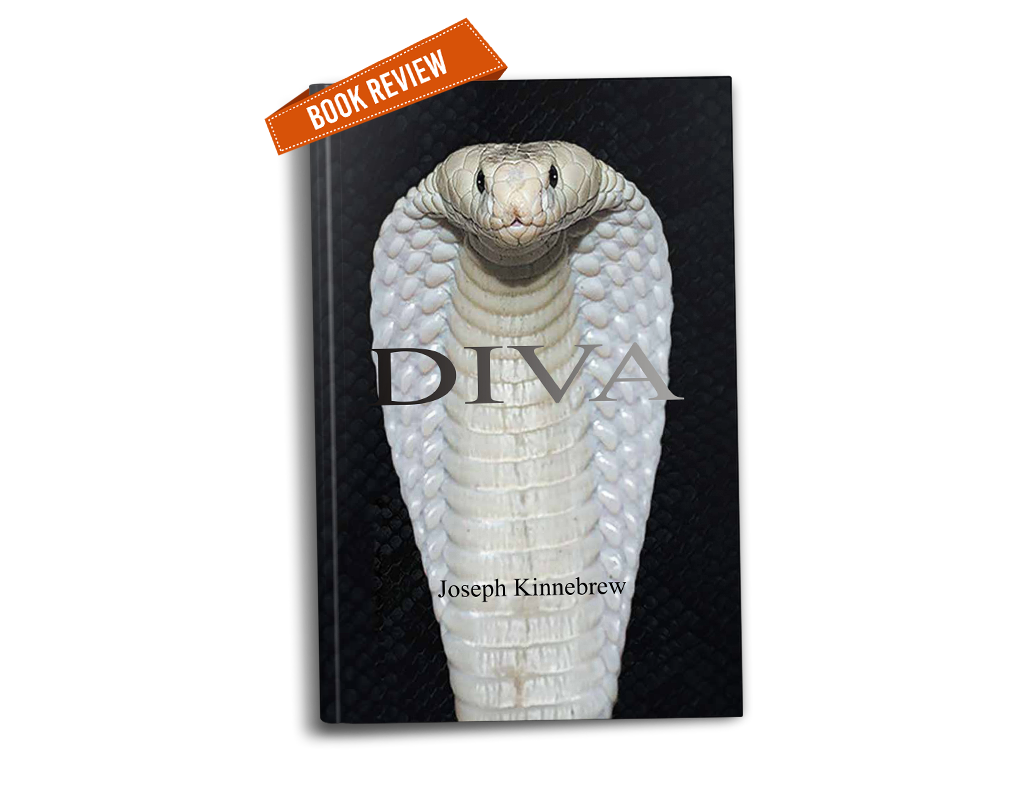
HEAR FROM THE BOOK EXPERTS

In partnership with Bookside Press

Diva
Joseph Kinnebrew
Reviewed by: Mari Carlson, The US Review of Books
“The puppeteers are simply coincidence and consequence; it was she who created the stage and the theater, the lights the action. I feel no guilt nor should you.”
Little does Diva know or care that the vitriol she inflicts upon everyone she encounters will come back to haunt her. The book begins as one of her scorned lovers unloads his years-long experience with Diva to a therapist. He and Diva are first attracted to each other as lonely divorcees looking for companionship. Despite reasons to leave her that pile up as he shares a home with her periodically, travels with her, and meets Diva’s friends and drug-dealing son, he sticks around because he feels compassion for her in a time of ill health and wants, if possible, to help her improve. A trained doctor and observer himself, he recognizes that she fulfills every symptom of a sociopath, including a lack of genuine interest in others, compulsive spending, shallowness, and an obsession with sex. He is not her only observer, however. Subsequent sections of the book are narrated by Diva and the spouse of another of her lovers.
Multiple points of view show that a pathological mind like Diva’s is not isolated. Her traits produce a ripple effect. She passes on her approach to life to her wayward son, who suffers from STDs and addictions. After she gossips about friends, complains about strangers, and uses lovers as objects for her own pleasure, they reject her. Her scorned lover’s pain raises questions, such as why victims stay with abusers, and touches his psychologist’s heart. Still, she feels for him. Their exchanges are among the few refreshing ones in the book.
Most of the rest of the dialogue is composed of Diva’s and others’ monologues. In vignettes of parties, schemes, and trips, Diva’s example works to create a lurid and conniving tone ripe for an explosion. The writing matches her strategies, employing pseudonyms and evasion, flitting from scene to scene outside chronological order. The landscape is largely internal, with little reference to places or setting, aside from descriptions of how people look. The resulting disorientation enhances the book’s predominant feeling of entrapment, like being caught in the Diva-spider’s web. Not only does an anti-heroine develop, but so too does societal damage at many levels. Many readers will relate, knowing someone like Diva who adversely affects her circles.
What starts out as a scathing portrait of a psychological deviant becomes a horror story as the final narrator fights back. Over the course of the story, Diva causes this reaction. As characters and readers alike are sucked into her deceit and competition for her own gain, she makes herself out to be the victim. A turning point comes when she is not invited to an annual charity event in London that she’s used to helping plan. She sinks to her lowest instincts, and so do those she hurts. The ripple effect she starts ends with a tsunami of grisly revenge by an unlikely agent. The plot’s pacing takes patience, as it consists mostly of descriptions of Diva and her associates, reserving most of the action until the conclusion. However, the reward is a graphic scene of DIY justice.
Reminiscent of the book’s multiple perspectives, Kinnebrew is a jack-of-all-trades: artist, inventor, and writer. His paintings are intricate and realistic studies blending real objects and dream-like elements. In this work, his words are the colors in a composition of dark detail. Diva’s laughable absurdity in this satirical novel works as a cautionary tale befitting the author’s out-of-the-box outlook.

